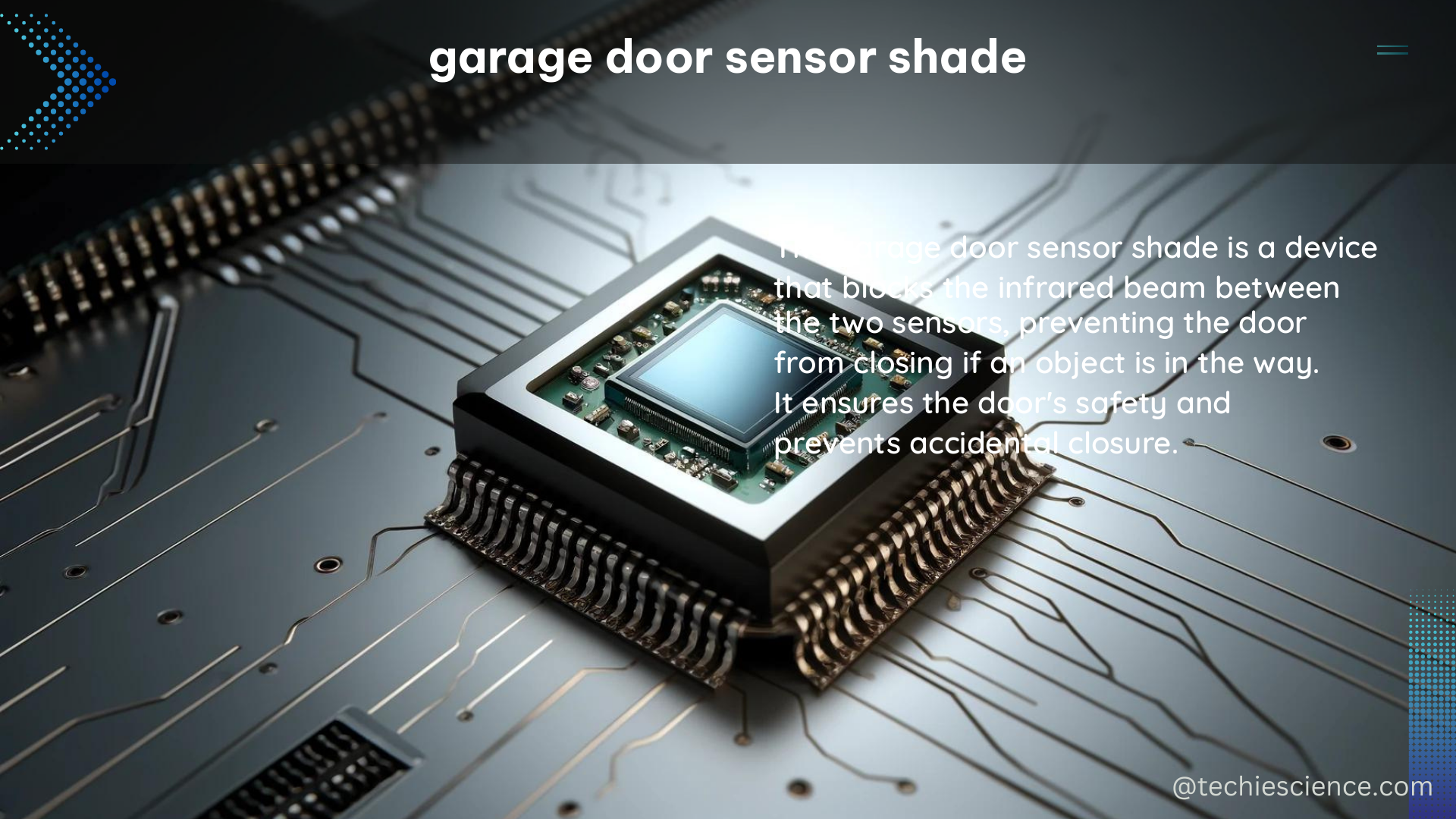Garage door sensor shades are an essential addition to garage door openers to prevent false triggering due to sunlight interference. The garage door sensor’s technical specifications typically include an infrared (IR) sensor that emits a beam of light to the receiver, which detects any obstructions in the door’s path. When the sun’s rays directly hit the sensor, it can cause false triggering, preventing the door from closing or opening.
Understanding Garage Door Sensor Specifications
Garage door sensors typically operate within the infrared (IR) spectrum, with a wavelength range of 850-950 nanometers (nm). The emitter unit generates an invisible IR beam that is detected by the receiver unit. When the beam is interrupted by an object, the sensor triggers the garage door opener to stop or reverse the door’s movement.
The effective range of these sensors can vary, but a common specification is a maximum distance of 30 feet (9.1 meters) between the emitter and receiver units. The sensor’s beam width is also an important factor, with a typical range of 4-6 inches (10-15 cm) at the receiver unit.
DIY Solutions for Garage Door Sensor Shade

To address the issue of sunlight interference, various DIY solutions have been proposed. These methods aim to create a small shadow over the sensor, preventing the sun’s rays from directly hitting it.
Cardboard Shade
One of the simplest DIY solutions is to use a piece of cardboard to create a shade for the sensor. Cut a rectangular piece of cardboard, approximately 4 inches (10 cm) wide and 6 inches (15 cm) long. Attach the cardboard to the sensor using double-sided tape or small screws, ensuring that it covers the sensor’s surface without obstructing the IR beam.
Toilet Paper Roll Shade
Another inexpensive option is to use a toilet paper roll as a sensor shade. Cut the roll to a length of 4-6 inches (10-15 cm) and slide it over the sensor unit, securing it in place with tape or a small rubber band.
PVC Pipe Shade
For a more durable solution, consider using a small piece of PVC pipe as a sensor shade. Cut a 4-inch (10 cm) section of 1-inch (2.5 cm) diameter PVC pipe and slide it over the sensor unit. The pipe can be secured with a small hose clamp or adhesive.
These DIY solutions may require adjusting the sensor’s position on the track to ensure the shade is properly positioned. Additionally, the aesthetics of these solutions may not be as pleasing as some commercial options.
Blocking Sunlight from Outside the Garage
Another approach to preventing sunlight interference is to block the sun’s rays from outside the garage. This can be achieved by planting shrubs or using opaque materials to cover the garage door sensor.
Shrub Placement
Strategically placing shrubs or other vegetation near the garage door can help create a natural shade for the sensor. Choose plants that will grow to a height of at least 2 feet (0.6 meters) and position them within 3-4 feet (0.9-1.2 meters) of the sensor.
Opaque Covers
Alternatively, you can use opaque materials, such as cardboard, plywood, or even a custom-made enclosure, to cover the sensor from the outside. This method can be more effective in preventing sunlight interference, but it may require more effort and resources to implement.
Swapping Emitter and Detector Units
Swapping the positions of the emitter and detector units can also solve the problem of sunlight interference. This method involves rewiring the units, which may require technical knowledge and expertise.
By placing the detector unit in the shaded area and the emitter unit in the direct sunlight, you can ensure that only the detector needs to be protected from the sun’s rays. This approach can be more effective than using a physical shade, but it may be more complex to implement.
Sensor Maintenance and Cleaning
Regularly cleaning the sensor and emitter units can also help prevent false triggering due to dirt or debris accumulation. Use a glass cleaner or a soft cloth to remove any residue that may interfere with the sensor’s functionality.
It’s important to note that the sensor units should be handled with care, as they are delicate electronic components. Avoid using abrasive materials or applying excessive force when cleaning the sensors.
Polarized Filters and Lenses
Polarized filters or lenses can also be used to shield the sensor from direct sunlight. These filters can reduce the sun’s glare, preventing false triggering.
One example is the Garage Sensor Protector available on Amazon for $11.99. This polarized filter can be taped or fixed to the sensor unit, providing an effective solution to the sunlight interference problem.
Conclusion
Garage door sensor shades are a crucial component in preventing false triggering due to sunlight interference. By understanding the technical specifications of the sensors and exploring various DIY solutions, you can effectively address this issue and ensure the reliable operation of your garage door opener.
Remember to consider factors such as aesthetics, ease of installation, and the specific requirements of your garage door system when choosing the best solution for your needs.
References:
- Reddit post on 3D-printed garage door sensor shade
- DIY Stack Exchange question on compensating for sun interference
- Amazon Garage Sensor Protector

The lambdageeks.com Core SME Team is a group of experienced subject matter experts from diverse scientific and technical fields including Physics, Chemistry, Technology,Electronics & Electrical Engineering, Automotive, Mechanical Engineering. Our team collaborates to create high-quality, well-researched articles on a wide range of science and technology topics for the lambdageeks.com website.
All Our Senior SME are having more than 7 Years of experience in the respective fields . They are either Working Industry Professionals or assocaited With different Universities. Refer Our Authors Page to get to know About our Core SMEs.